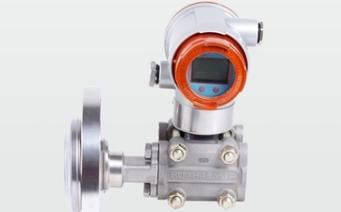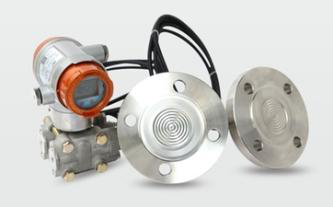Selection principle
When selecting the model, the corrosion of the measured fluid medium to the metal of the diaphragm capsule should be considered,the material of the diaphragm capsule of the transmitter is ordinary stainless steel, 304 stainless steel, 316/316L stainless steel, tantalum and so on.If the measured medium is highly viscous,easily crystallized, and highly corrosive,an isolated type transmitter must be selected.
When selecting the model, the temperature of the measured medium should be considered. If the temperature is high enough to reach 200 ~400℃, the high temperature type should be selected.Otherwise, the silicone oil will produce vaporization expansion, which makes the measurement inaccurate.
The isolated type pressure transmitter is preferably threaded connection, which saves money and facilitates installation.
According to the design specifications, in the selection of engineering design, whether pneumatic or electric transmitters are used should be comprehensively considered and analyzed according to the specific conditions of the device because of their speciality.
In general, the following conditions are preferred for the selection of pneumatic transmitters:
※ The distance from the transmitter to the display adjustment unit is short, usually not more than 150 meters;
※ The process materials are flammable and explosive medium and the relative humidity is very large;
※ Requires occasions where the instrument investment is less and the response speed is not fast;
※ Generally, small and medium-sized enterprises require easy maintenance and economic and reliable;
※ In large installations based on electric meters, some on-site control loops are not require centralized operation of the central control room.
The following conditions are preferred for the selection of electric transmitters:
※ The distance between the transmitter and the display adjustment unit is more than 150 meters;
※ Large enterprises require central control with highly centralized management;
※ Set up the objects controlled and managed by DCS computer;
※ Requires occasions where has fast response, information processing and complex computing;
In practice, in modern production installations, they are mixed and selected according to their respective characteristics.
Selection of pressure transmitter
From a physical point of view,the pressure on any object includes both atmospheric pressure and the pressure of the measured medium (generally referred to as gauge pressure). The sum of the pressures of the two parts acting on the measured object is called the absolute pressure.
P absolute = P gauge + atmospheric pressure
The instrument for measuring absolute pressure is called the absolute pressure gauge.For ordinary industrial pressure gauges, the gauge pressure value is measured, that is, the pressure difference between absolute pressure and atmospheric pressure.When the absolute pressure is greater than the atmospheric pressure value, the measured gauge pressure value is positive value, which is called positive gauge pressure; when the absolute pressure is less than the atmospheric pressure value, the measured gauge pressure value is negative value, which is called negative gauge pressure,that is, vacuum degree.The instrument for measuring the vacuum degree is called the vacuum gauge.
(1) In order to ensure the accuracy of pressure measurement, the minimum pressure measurement value should be higher than 1/3 of the measurement range of the pressure gauge;
(2) For occasions requiring remote distance measurement or high measurement accuracy, pressure sensors or pressure transmitters should be selected;
(3) When the measurement accuracy requirement is not high, the resistance type or inductance type, Hall effect type remote pressure transmitter can be selected.
(4) The pneumatic base type pressure indicating regulator is suitable for local pressure indication and adjustment;
(5) Pressure transmitter and pressure switch should be reasonably selected according to the explosion-proof requirements of the installation site.
Selection of differential pressure transmitter
The differential pressure transmitter is selected according to the following points:
(1)Measuring range, accuracy and measurement function;
(2) The environment faced by the measuring instrument, such as the industrial environment of petrochemical industry, which has the existence of thermal (toxic) and explosive dangerous atmosphere and higher environmental temperature.
(3) Physicochemical properties and state of the measured medium, such as strong acid, strong alkali, viscous, easy solidification, crystallization and vaporization, etc.
(4) Changes in operating conditions, such as changes in medium temperature, pressure, and concentration. Sometimes changes in concentration and density of gas phase and liquid phase should be considered from the beginning to the normal production of the parameters.
(5) The structure, shape, size of the vessel ,equipment accessories in the vessel and all kinds of inlet and outlet pipes of the measured object shall be considered, such as towers, solution tanks, reactors, boiler steam drums, vertical tanks, spherical tanks, etc.;
(6) Other requirements, such as environmental protection and sanitation;
(7) There must be a unified consideration in the selection of engineering instruments, and it is required to reduce specifications and varieties as much as possible and reduce spare parts,in order to facilitate management;
(8) Actual process conditions
In summary, the selection of the transmitter is feasible in technology,reasonable in economy,and convenient in management.



